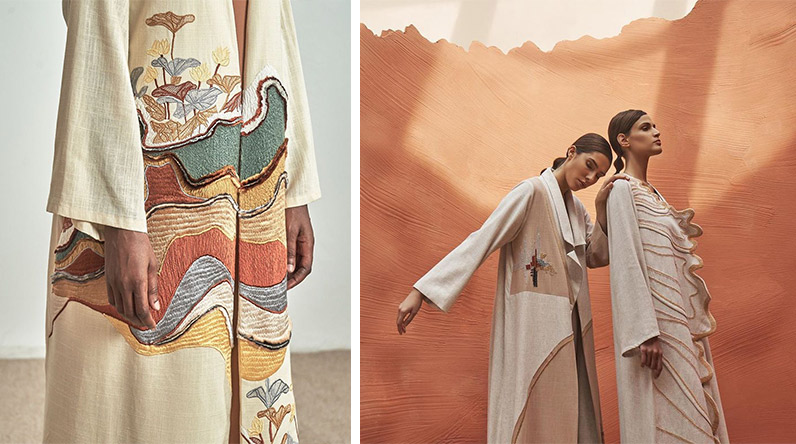It’s fair to say that Shari Harbinger knows a thing or two about curly hair. In the early noughties, the hairdresser and businesswoman was part of the team at the legendary Devachan salon in New York that helped revolutionize how to cut and care for naturally textured hair.
During that decade, the DevaCurl academy that Shari helped launch became the go-to training center for cutting curls, with salons from all over the world sending delegates to learn the revolutionary technique. The products and methods Shari and her partners developed – including “No-Poo” (the brand’s first lather and sulfate-free cleanser) – were ahead of their time, and paved the way for textured hair to be celebrated rather than tamed.
Fifteen years later, fashion editorials and Instagram feeds are awash with bold curls and beachy waves, thanks in no small part to DevaCurl’s pioneering work. Shari has now moved on from the brand and her latest venture – the eponymous House of Harbinger – is an education platform designed to help salons and stylists to harness their full potential while inspiring a new era of creativity, expertise and growth. The 4 Pillar Strategy program Shari has developed provides beauty pros with the knowledge and tools needed to deliver a top-class client experience.
We caught up with Shari to find out more, and get the lowdown on how curly girls can get the most out of their hair:

How did you get into hairdressing?
SH: I studied music at university, although I was interested in hair and beauty from a young age. There’s something about the psychology of hair – how it affects how you feel – that’s always fascinated me. The catalyst, though, was a sales job at Clairol. They sent me to cosmetology school, where I realized I wanted to work directly with hair, not just sell the products.
How did you get involved with Devachan and DevaCurl?
SH: I was working at an event when I connected with one of my future partners who persuaded me to join him at Devachan Salon. What was interesting was how curly-haired women visiting the salon expected their hair to be blown out straight. They thought curly hair had to be fixed in order for them to look pretty. We questioned this, and threw the rulebook right out the window.

What’s special about the products you developed with DevaCurl?
SH: Curly hair loves moisture, and we realized early on that most shampoos dehydrate hair due to the foaming agent – sodium lauryl sulfate – which strips it of essential oils. Initially, we removed shampoo from the hair diet, and instead conditioned it twice, but we needed to create a sulfate-free alternative.
A chemist in Germany agreed to help, and the result was the original DevaCurl No-Poo cleanser. It’s kinder to curly hair but still cleans the scalp. Its success led to the development of a conditioner and a styling gel and this trio of products inspired us to develop a hair-care routine that our customers could recreate at home.
Tell us about the DevaCurl Academy?
SH: We already ran classes teaching stylists how to cut and color curls and use our products, but the turning point came when the New York Times wrote about us. The business exploded overnight, and I knew the time had come to start a formal academy.

What products do you recommend for curly hair?
SH: You must first decide what your hair goals are. Do you want big hair; soft flowing curls; beachy waves? Once you’ve established that, you can find the products your hair needs.
To wash the hair, it’s best to use a sulfate-free shampoo or cleanser, which should be worked in to stimulate the scalp, then thoroughly rinsed before using a silicone-free conditioner.
When it comes to styling, gels are best for defining curls, creams are good for adding moisture and creating texture, while foams are great for adding volume. Apply with flat, or gently cupped, hands, to avoid disturbing the curl, and try to move the hair as little as possible during the drying process styling to help keep frizz to a minimum.
What are the most common mistakes people with curly hair make?
SH: The most important are made during showering: not scrubbing the scalp thoroughly during cleansing, not working the conditioner through to the ends of the hair; then not leaving in enough moisture when you get out.
For best results, divide hair into sections and work the conditioner through from bottom to top using your fingers as a comb. The hair should feel slick. Don’t rinse all the conditioner out – leave a little to help set it up for styling.
When you get out of the shower, leave some moisture in so your fingers slip through it without any tangles, and resist the urge to use a terry cloth towel or a turban. Then, add products of choice in either a downward gliding motion before scrunching upwards with your hands to remove excess water which allows the texture to reveal itself. Flip the head back to an upright position, put a towel over your shoulder and let your hair hang naturally. It should be on the wetter side, rather than damp. Remember, the wetter the better when it comes to styling curly hair.

How often should curly hair be washed?
SH: It depends on the texture. Wavy, fine-textured hair may need washing every day, or every other day, while those with more robust curls may be able to go every third day. Those with super-curly hair may be able to go five or six days as their hair tends to need more moisture.
What’s your best advice for curly-haired people?
SH: Treat your hair like cashmere, rather than polyester, and wear your curls loud and proud!
Shari's top curly hair tips

Do's:
1. Ensure your stylist is properly trained in curly hair techniques.
2. Have your curls cut dry to see the shape unfold and to prevent hair from being cut too short
3. Use a microfiber towel when styling hair to avoid friction and frizz
4. Apply styling products to very damp/wet hair, the key to beating frizz. The wetter the better!
5. Scrub the scalp vigorously when cleansing to remove dirt and build up and rinse thoroughly.
6. Use your fingers (or a wide tooth comb) when conditioning to gently work product through hair and detangle.
7. Leave some conditioner on the ends when rinsing for added moisture when styling
8. Blend different styling products to find the perfect mix for your needs.
10. Detangle in the shower from the bottom up treating your hair like a gentle fabric.
11. Use a hair masque frequently on dehydrated hair until moisture balance is restored.
12. Invest in a silk or satin pillowcase to keep the hair from tangling.

Don'ts
1. Don’t give up! Finding your perfect routine takes trial and error. Curls take time to bounce back from years of blow drying and straightening.
2. Don’t wrap hair in a towel straight out of the shower as it will remove the necessary water needed to evenly distribute products during styling.
3. Don’t use shampoos with sodium laureth sulfate or conditioners with silicone ingredients. They dehydrate the hair and scalp.
4. Don’t over-use protein treatments. In excess they will dehydrate the hair.
5. Don’t wait too long between washes. Build-up of styling products can suffocate the hair follicle and lead to hair loss
6. Don’t use excessive chemicals or heat styling tools. They damage the hair and cause breakage and in many cases can distort the curl pattern.
7. Don’t disturb your curls during the drying process as it will disrupt curl definition and can also cause frizz.
8. Don’t shampoo daily unless you have an oily scalp, use a lot of product on your hair or swim daily..
9. Don’t overuse products. They can weigh down your curls. Use just enough to evenly distribute across the landscape of your hair so that all the hair is saturated.





